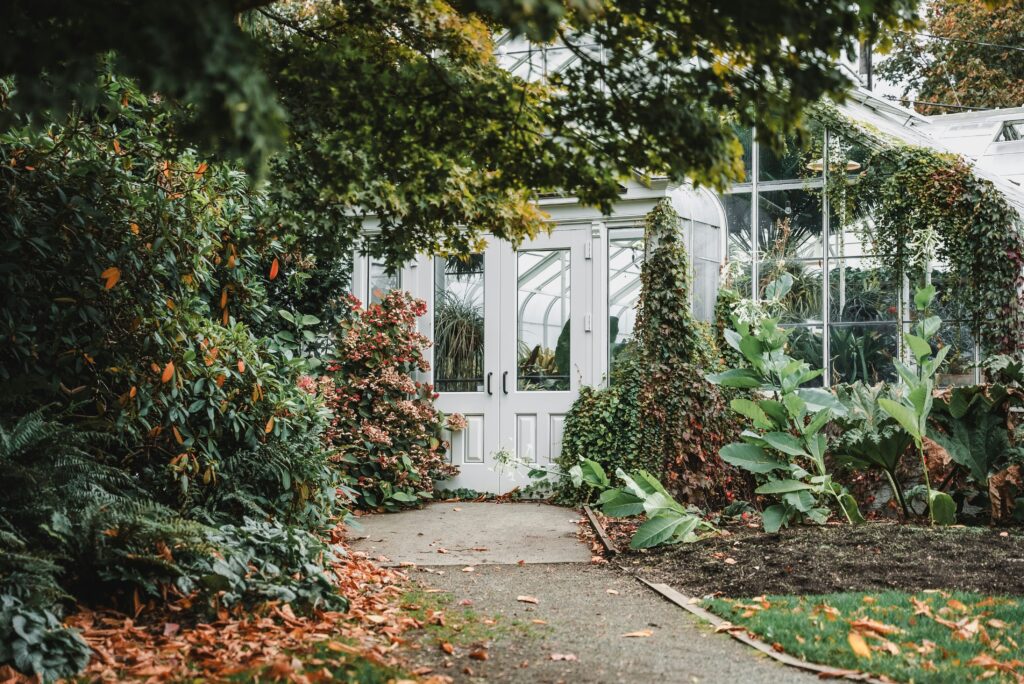As winter approaches, it’s crucial for gardeners to protect their plants from sudden temperature drops and harsh cold winds, which can dry out branches and make them brittle. Under the weight of snow, these branches are at risk of breaking. Properly preparing your garden for winter and covering frost-sensitive plants will help them survive the season in the best possible conditions.
Which Plants Need Covering for Winter and Why?
Tender perennials, exotic flowers, and young decorative and evergreen shrubs (up to four years old) are especially vulnerable. This includes roses, hydrangeas, rhododendrons, Korean chrysanthemums, weigela, buddleia, deutzia, tree peonies, thuja, yews, juniper, grapevines, and young peach and apricot trees. It’s also essential to cover plants that were planted in the fall, as they haven’t had enough time to establish strong roots.

Winter protection ensures better root establishment for newly planted or poorly rooted plants. It shields the surface-level root systems and young shoots from freezing in low temperatures, especially when there is no snow cover. Insulating fruit trees can prevent cracks in the bark and damage to the inner layers caused by fluctuating temperatures during winter thaws followed by hard freezes. Covering thuja and other evergreens shields them from drying winds in snowless winters, helps retain their rich green color, and provides optimal conditions during prolonged cold periods, while also delaying early awakening during sudden warm spells.
When to Cover Plants for Winter?
As an experienced gardener, I recommend the following: In southern regions where winters are mild and snow is scarce, cover your plants to help retain snow, which acts as natural insulation against the cold. Warm coverings are only necessary for subtropical and tropical plants that cannot tolerate even light frosts. In central areas, start covering plants in late October. If the autumn is unusually warm, it’s best to wait until early November. In these regions, plants are mainly protected from prolonged freezes, winds, and sunburn. In northern regions, pay attention to the consistent drop in temperature: cover your plants once the top layer of soil begins to freeze.
A word of caution: It’s best to carry out plant protection on a dry, sunny day. Avoid covering plants in rainy weather, as moisture combined with cool conditions increases the risk of fungal infections. I advise against placing warm coverings too early, before the arrival of cold weather. Remove sunburn protection once the snow melts, and frost coverings no earlier than March or April, or when consistent warm temperatures set in. Uncover plants gradually to prevent sudden temperature swings, which can harm tender plants, especially during nighttime frosts.
Preparing Plants for Winter Covering
Before covering plants for the winter, it’s important to help them enter a dormant state.
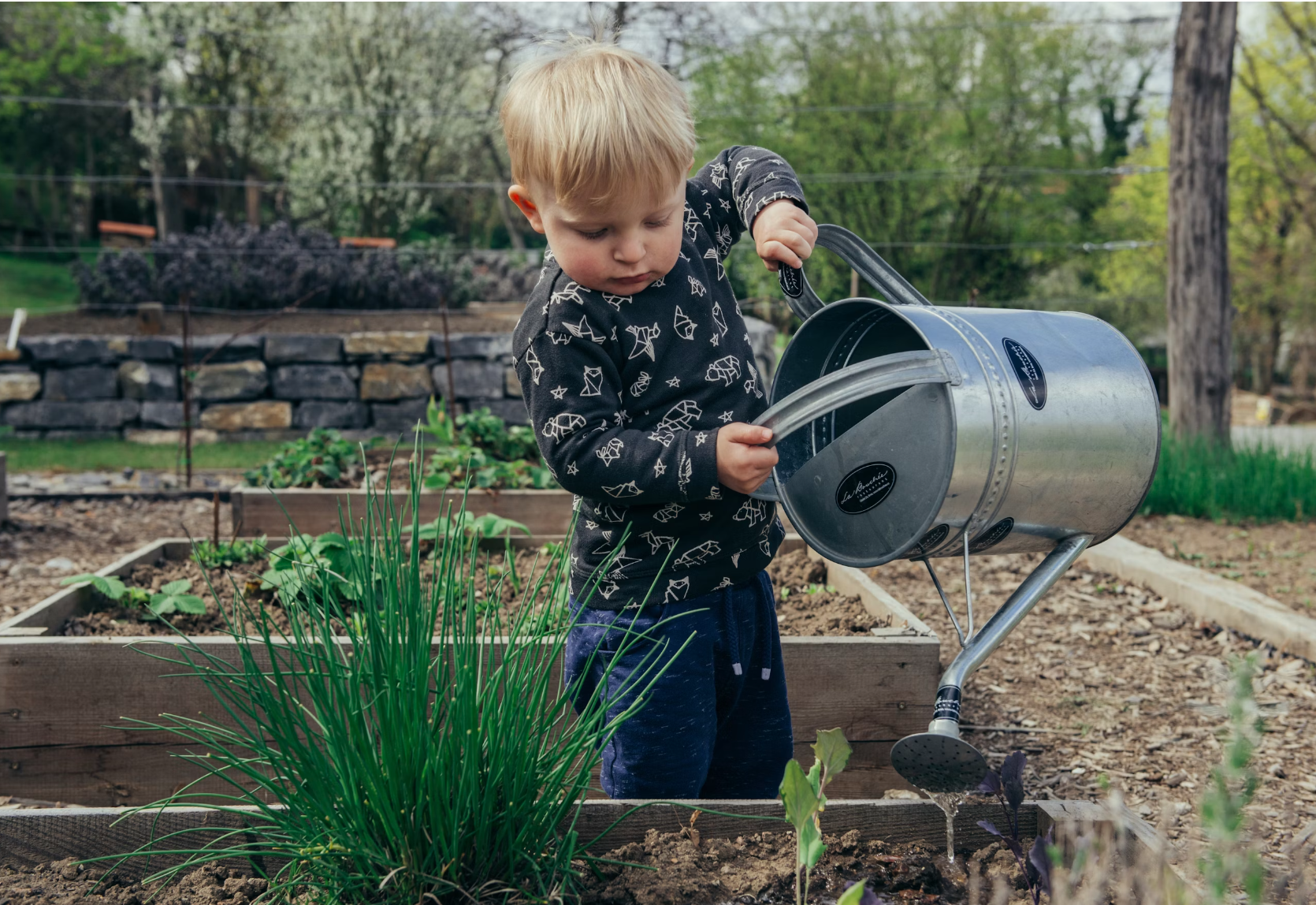
Step 1: Deep Watering
Ensure you give your plants a thorough watering so that moisture penetrates deeply into the soil.

Step 2: Loosen the Soil to Improve Airflow
Carefully loosen the soil around the base of trees and shrubs to provide better air circulation.
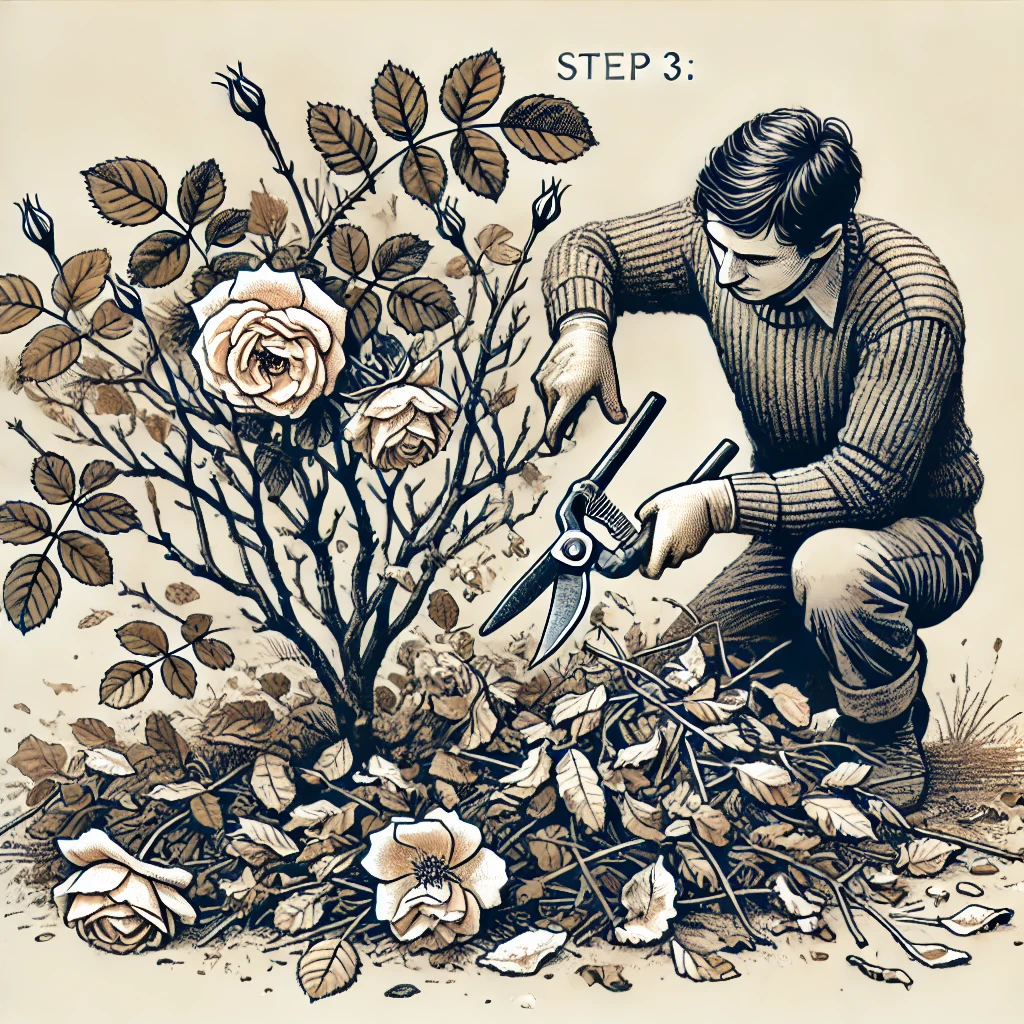
Step 3: Prune Old Leaves
In October, trim off faded blooms from roses, remove the leaves, and cut off any immature shoots. Right before covering, prune the roses (except for climbing varieties).
Additionally: Before winter sets in, I recommend fertilizing your plants with phosphorus or potassium-based fertilizers. This will help young shoots harden and strengthen the plant, making it more resistant to sudden temperature changes and severe frost.
Important Note: Avoid using nitrogen-based fertilizers for autumn feeding. These promote the growth of new greenery, which can put your plants under significant stress and increase their vulnerability.
Best Ways to Protect Your Plants for Winter in Your Garden
From my own experience, I can confidently say that there are numerous ways to cover plants for winter. The main methods include hilling, mulching, wrapping, bending, and air-dry covering.
1. Method of Plant Protection: Hilling
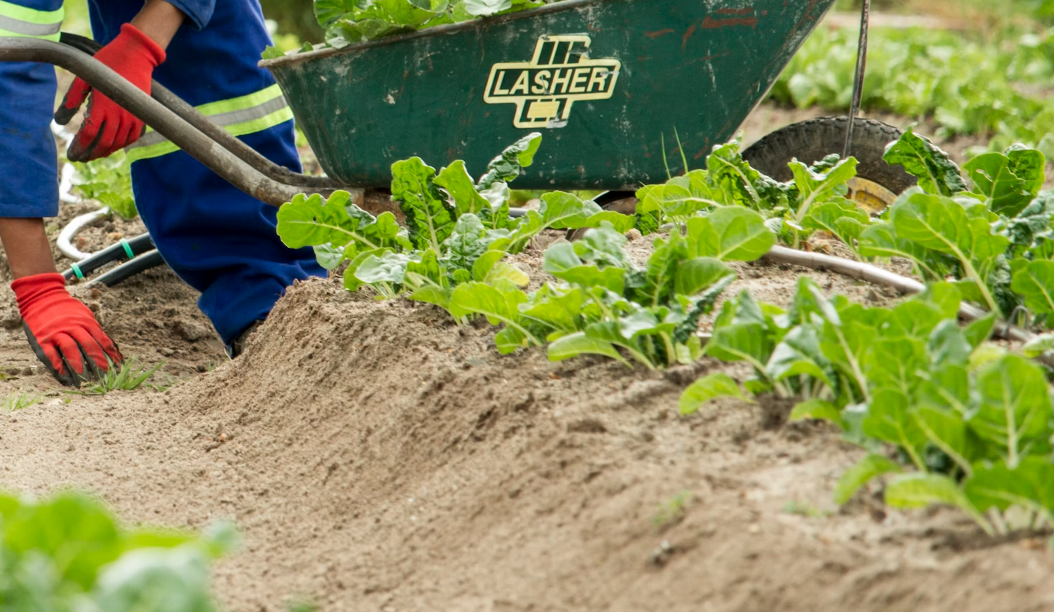
Hilling, which involves mounding soil around the base of the plant, is one of the most common methods to protect the root system in areas with sudden temperature drops and frosts. This method helps maintain a consistent temperature around the root collar, preserving the health of buds near the ground and protecting shallow roots from freezing.
You should start hilling before the onset of consistent cold weather or at the first signs of frost.
Important Note: Avoid hilling plants when the weather is still warm or using wet soil, as this can cause the bark around the base to rot, leading to the death of the root collar and buds.
I personally use soil to form a mound around the base of the plant, ensuring not to expose the roots. The mound should be 10 to 40 cm high, depending on the height of the plant’s trunk or the perennial shoots of the shrub.
When the weather warms up, I gradually break down the mound, ensuring that the soil slopes away from the base of the plant. This way, spring moisture can drain away from the trunk and not pool at the plant’s base.
For hilling, both store-bought universal peat substrate (buy on Amazon) and regular garden soil can be used. It is important that the soil is loose and well-aerated. If clay soil is used, there is a high risk that the plants will rot.
Important: Hilling is indeed the simplest way to protect plants from frost, but it is not suitable for all types of plants. Tea-hybrid roses, Korean chrysanthemums, and other heat-loving plants that do not exceed 20-30 cm in height are typically covered with this method to protect them from winter frosts.
Method 2: Mulching for Winter
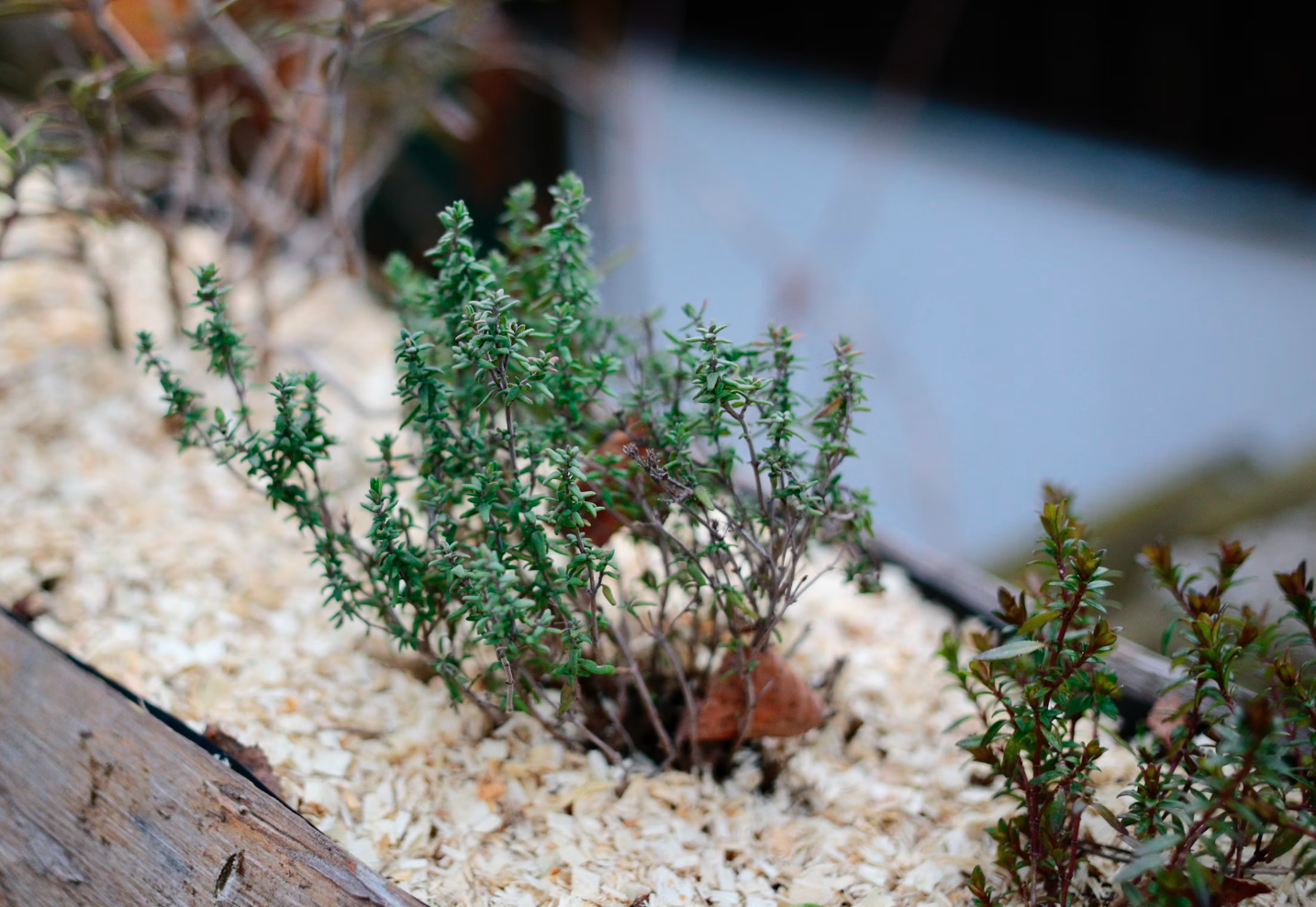
Mulching in the fall is a way to insulate plants for the winter using dry materials such as fallen leaves, dried grass clippings, or wood shavings. This method is particularly useful for plants with shallow root systems that aren’t sufficiently frost-resistant, as well as for young plants that haven’t yet developed a strong root system.
For mulching the soil around plants, use dry fallen leaves, avoiding oak and walnut leaves. Other suitable mulching materials include decomposed semi-rotted sawdust (buy on Amazon), fine wood shavings, shredded bark, top peat, humus, and mature compost. Before applying mulch, build a small mound of sand or soil around the base of young trees, about 7-10 cm high, and then spread the mulch around this mound up to 40 cm high. Never apply mulch directly against the trunk, as this can lead to rot.
Mulch helps reduce heat loss from the soil and protects the plant’s root system.
Important to note: During a rainy, snowless winter, organic mulch can become soaked and cause rotting, or it can freeze into a solid block of ice during subsequent frosts, offering no protection to the roots. Additionally, materials like peat, sawdust, and shavings can acidify the soil as they decompose, making them unsuitable for certain types of plants. Due to these drawbacks, mulching as a method of winter protection is used less frequently.
Method 3: Loose Wrapping of Plants for Winter
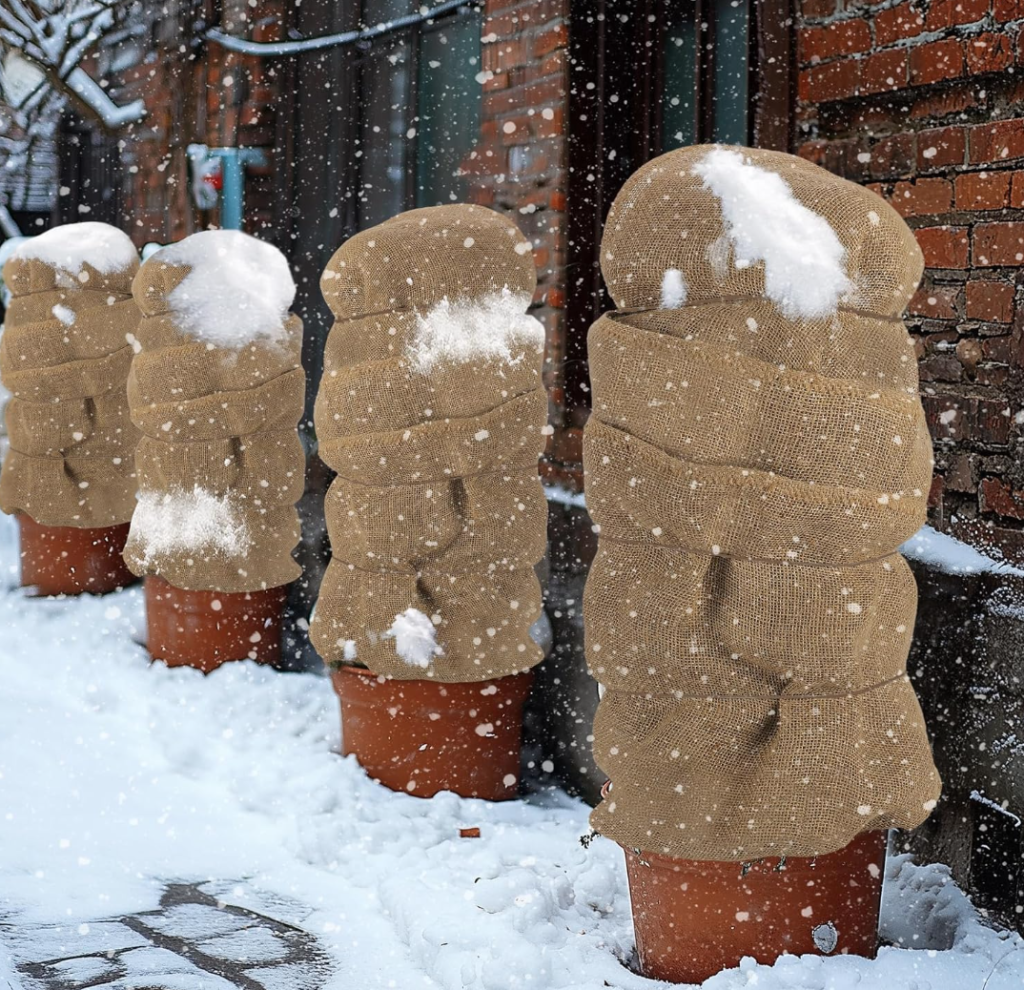
The wrapping (buy on Amazon) method is used to protect plants from sunscald. The best time for wrapping plants is between February and April. This is the period when temperatures fluctuate significantly, with snowfalls followed by sunny days that can cause sunburn damage to plants.
During this time, thuja, cypress, juniper, and other evergreen shrubs are especially vulnerable. The problem is that under the influence of the sun, the needles of these plants begin to awaken. For photosynthesis to occur, water is needed, but the roots are still dormant and unable to supply moisture to the upper parts. This leads to needle desiccation, compounded by solar radiation. As a result, a physiological thermal burn may occur, potentially causing partial or even complete plant death.
Plants are wrapped for winter using strong, breathable fabric. The lower edge of the material is secured near the ground. Then, the plant is wrapped from bottom to top, with the fabric layers slightly overlapping and tied securely with string as the wrapping progresses.
It is important to regularly check the February wrapping, especially after snowfalls, and gently shake off excess snow from the wrapped trees. The coverings on thuja are removed in April, once the ground has completely thawed and the roots begin absorbing moisture (when sap flow starts).
For wrapping thuja in winter, you can use white, dense spunbond or shading nets with a high shading density (75-95%). Shading nets are particularly effective for protecting plants in the southern regions of the country. Avoid using old potato or vegetable sacks unless treated with fungicides. Generally, burlap is not the best material for insulating plants in winter. It not only allows moisture to pass through but also absorbs it. When wet burlap freezes, it forms a rigid, icy “shell,” and during a thaw, it creates an environment that promotes rot and mold growth.
Method 4: Bending Plants for Winter Protection
The above-ground parts of climbing plants and vines, whose flowering occurs on the previous year’s growth, also need protection from the winter cold. Bending is the most effective way to cover vine-like plants in the garden. To do this, prepare a wooden base beneath the plant to isolate it from moisture. The vines, shoots, or climbing stems removed from their supports are laid onto this base. If the branches are flexible, carefully bend them down and secure them with ropes, tying them to stakes driven into the ground or to the wooden base. Cover the vines with breathable fabric, such as agrotextile or another natural or synthetic material that allows airflow.
When to Bend the Plants?
This should be done before the frosts set in, as the wood becomes brittle and can break easily in freezing conditions.
When to Uncover the Plant?
Begin uncovering the plants gradually when the thaw arrives. This slow process helps protect the plants from sunburn.
Method 5: Framed Air-Dry Covering for Winter
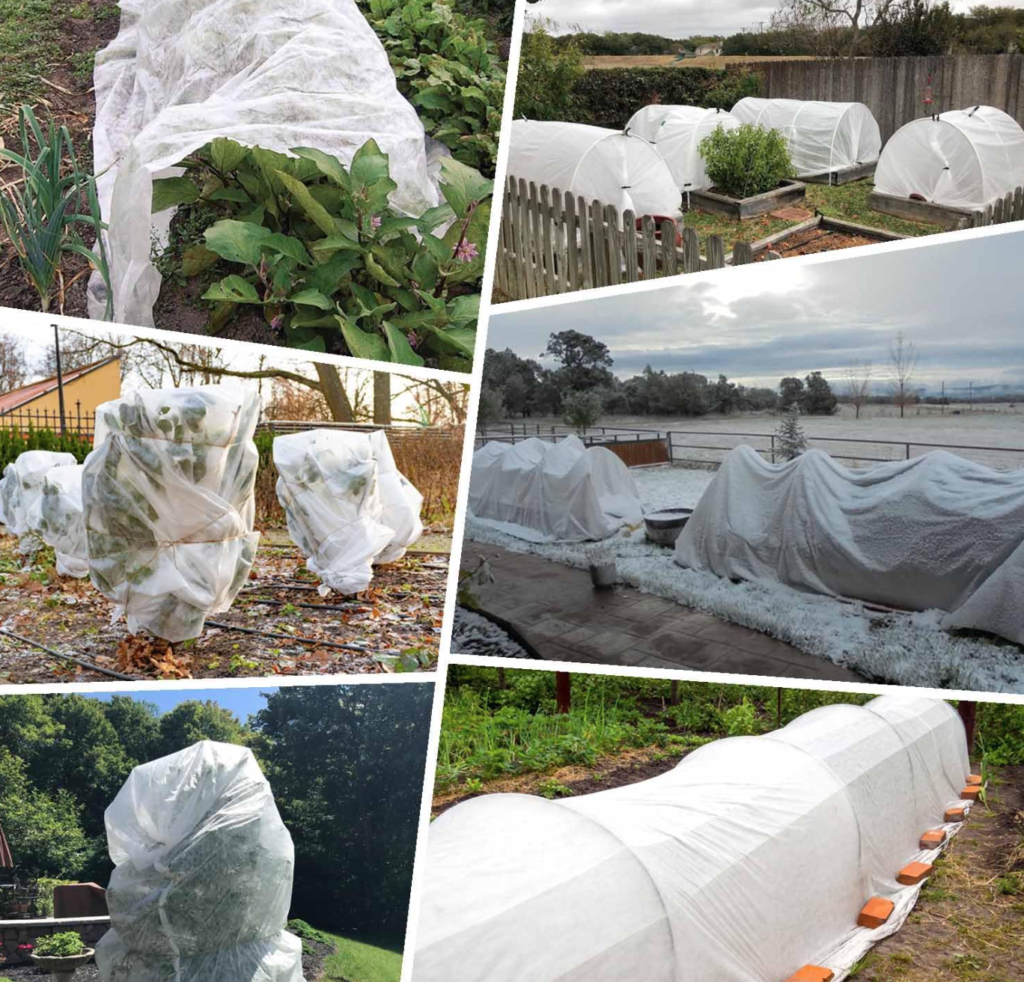
Framed air-dry protection (buy on Amazon) is necessary during winter for broad-crowned evergreen shrubs, rhododendrons, tree peonies, tea-hybrid roses, floribunda roses, and other low-growing, heat-loving plants. This method is particularly useful in regions with minimal snowfall and moderately low temperatures.
A framed air-dry covering involves constructing a frame made of wooden beams or metal rods, which is then covered with protective material. This cover is often shaped like a pyramid with three or four sides.
Sometimes, frames are made using plastic pipes or bamboo sticks. The structure must be sturdy and stable enough to support up to 50-60 cm of snow and withstand strong winds. The key to air-dry covering is ensuring an air gap; the frame is placed over the plant so that there is a space of about half a meter between the plant’s top and the covering material.
The protective material is draped over the frame (buy on Amazon), spread out over the crown, and secured with ropes, leaving a gap at the bottom for ventilation. When the temperature drops below five degrees Celsius, the cover is fully lowered to the ground.
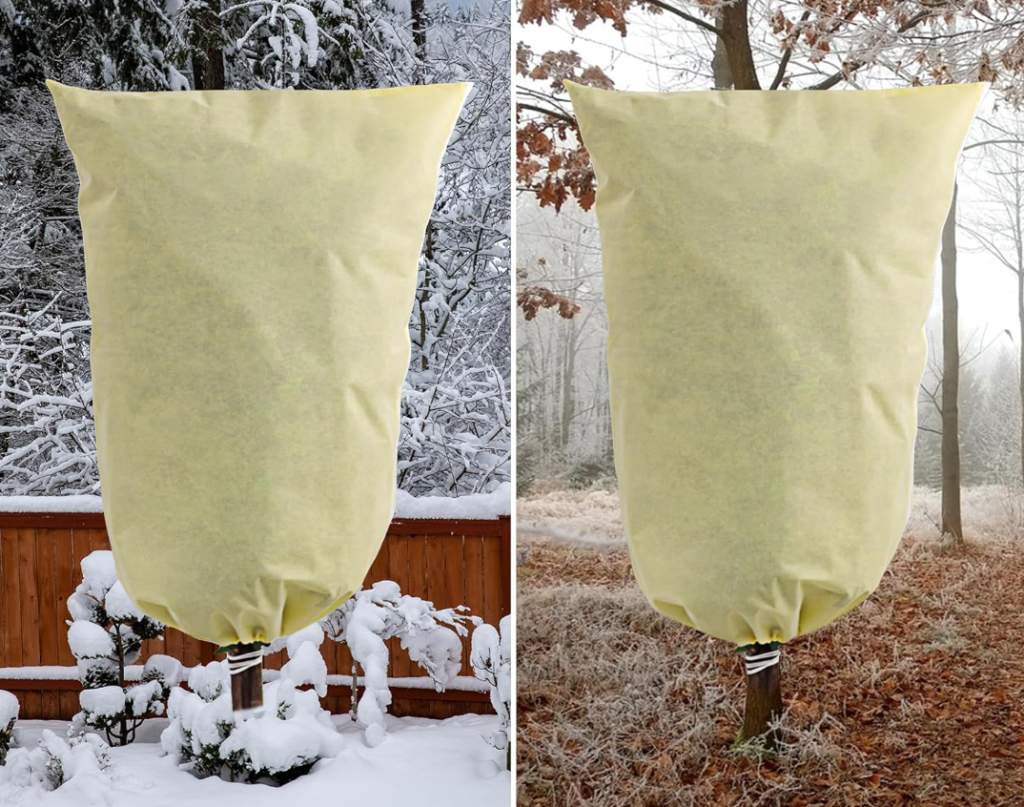
You can use ready-made plant covers or create them yourself. It is recommended to use white agrotextile for making covers. This material, made from UV-stabilized polypropylene, is lightweight, thermally bonded, and free of toxic substances, making it environmentally friendly and safe for people, animals, and plants.
A cover for roses made from dense white agrotextile is wind-resistant and durable. It fits over the frame easily, offering reliable protection for roses and shrubs during the winter.
Important: Be careful not to damage shrub branches during the covering process. Tie sprawling bushes gently with rope or twine before covering them. Fragile or brittle plants should not be tied. Also, when setting up large air-dry covers, ensure the branches do not touch the frame or agrotextile. If plants freeze to the covering material, they may develop diseases or die in the affected areas.
Additional Essential Tips from a Gardening Guru on Winter Plant Protection:
1. Avoid Using Plastic Film Covers!
Covers for evergreens, shrubs, and flowers should never be made from plastic film. Polyethylene disrupts the natural airflow, creating a greenhouse effect during a thaw, which leads to condensation forming inside the cover. If the temperature rises above freezing for a few days, the plant buds may start to swell. When the temperature drops again, these swollen buds are likely to die. Thus, using plastic film for winter plant protection is strictly prohibited. Plants under the cover need to breathe!
2. Use Breathable Agrotextile Covers for Thuja
Covers made from agrotextile effectively protect plants from rotting, freezing, and sunburn. Agrotextile wraps for air-dry winter protection allow air to circulate freely, preventing moisture accumulation around the root system, which could otherwise lead to fungal mold damage.
3. Ideal for Evergreens
Breathable agrotextile covers let in enough light to keep the plants healthy without causing sunburn, making them perfect for evergreens. These covers can withstand strong winds and provide frost protection. Frame covers for thuja help moderate temperature fluctuations within the enclosure, as the warmed air under the fabric cools more slowly at night.
4. Creating a Microclimate
Thanks to the unique properties of agrotextile, winter plant covers create a suitable microclimate that prevents root rot while allowing the plant to breathe. For example, roses can remain frost-free yet still get the airflow they need, ensuring their health and vitality through the winter season.
This post contains affiliate links. As an Amazon Associate, I earn from qualifying purchases. This helps support our work at no extra cost to you.

